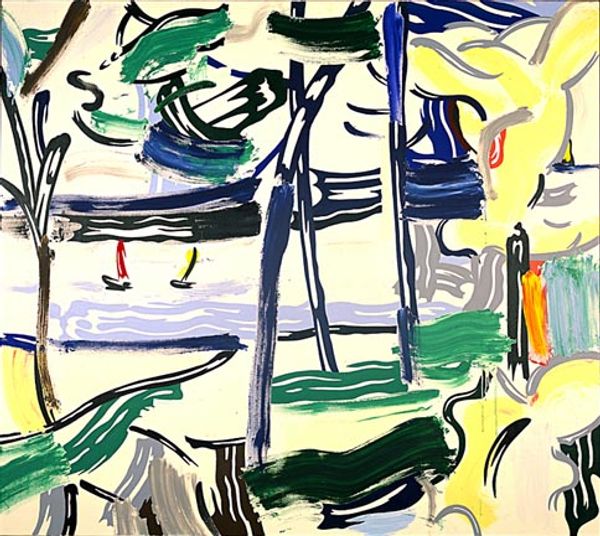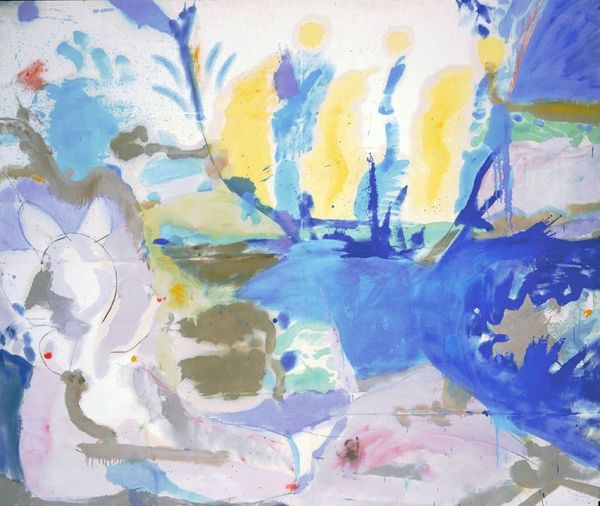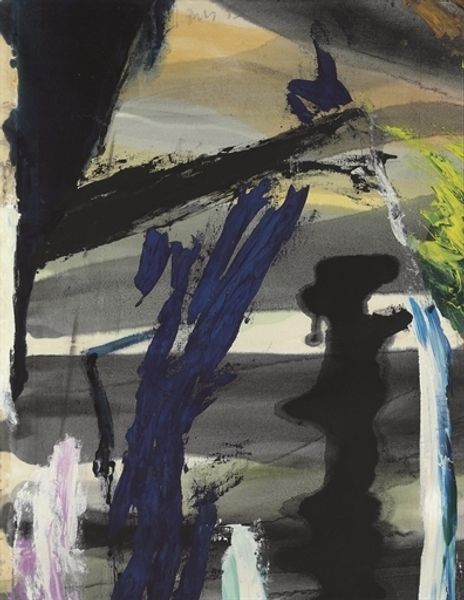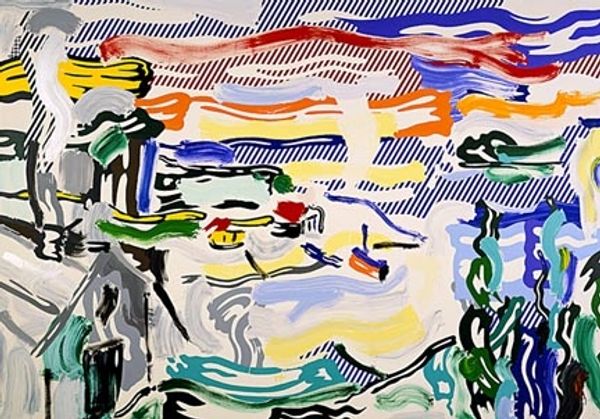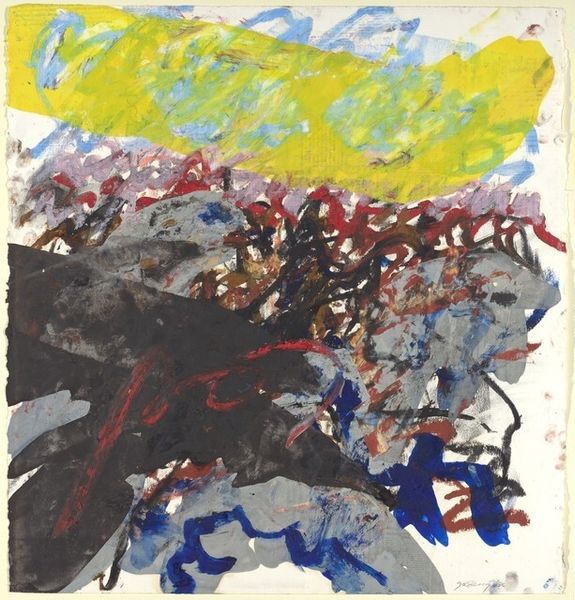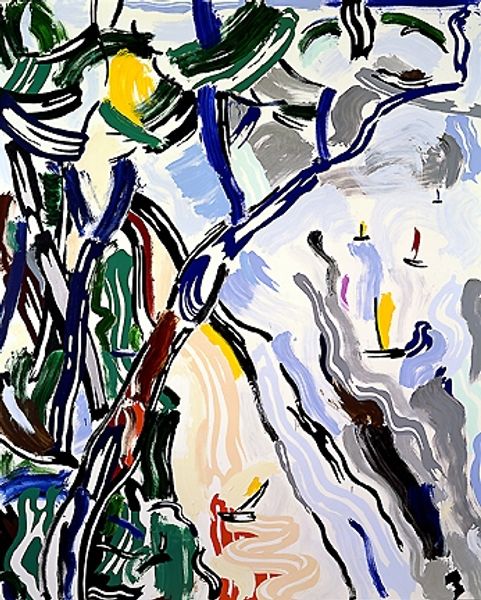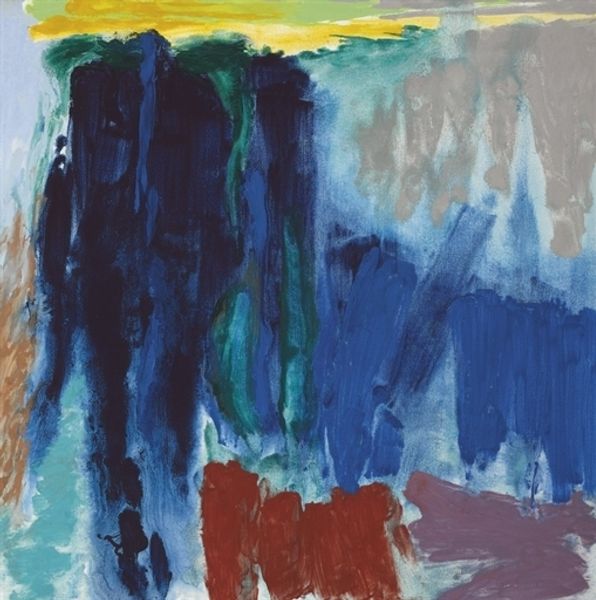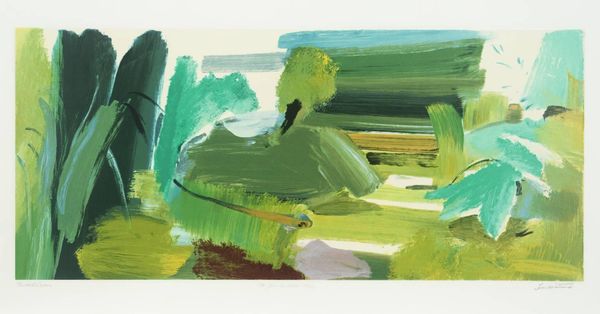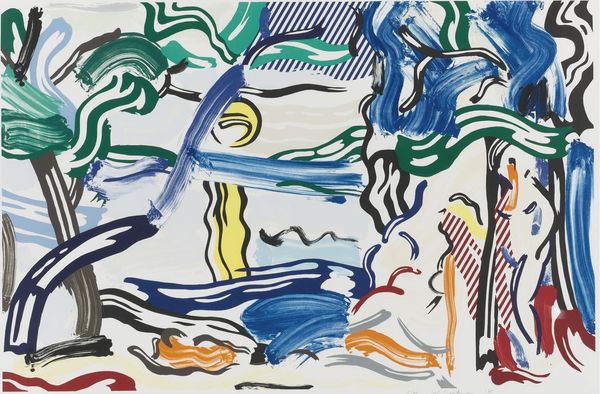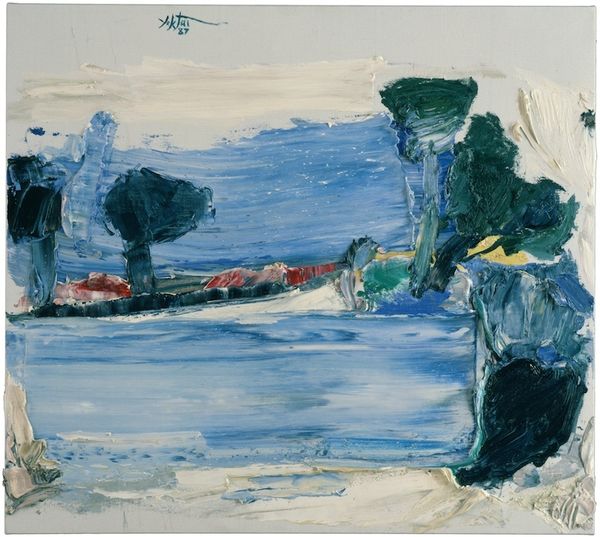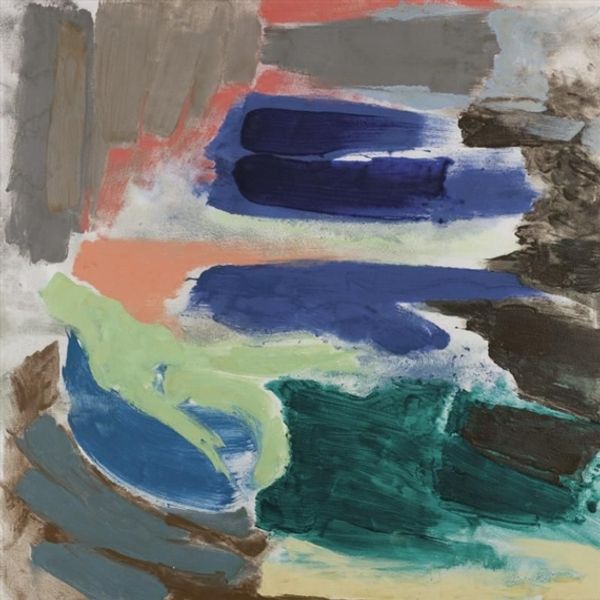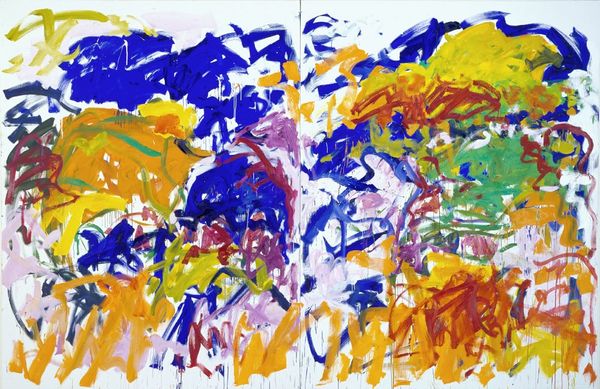
Copyright: Modern Artists: Artvee
Editor: So, this is Roy Lichtenstein’s "View from the Window," painted in 1985, using acrylic paint. It’s got this breezy, almost unfinished quality, very different from what I usually associate with Lichtenstein. The Ben-Day dots are gone. What’s your take on this, seeing it within the larger context of art history? Curator: It’s tempting to see this as a departure, but I think it reflects a broader shift in Lichtenstein’s practice towards a more self-aware engagement with art history itself. Think about how pop art functioned in the ‘60s, disrupting the authority of Abstract Expressionism. By 1985, the game has changed. The market embraced Pop art, museums valorized it. How can Lichtenstein keep making commentary in such a changed institutional landscape? Editor: By playing with our expectations? It feels less like a critique and more like a…celebration of painting, even though it still uses some of the pop vocabulary? Curator: Exactly! Note the scale. This isn’t some cheap reproduction, or even something based on comic books, but fine art materials and monumental scale. Where are these materials going and what do they signify for viewers, who may feel a range of attraction or repulsion. This 'view' isn’t just a literal scene; it’s Lichtenstein riffing on the whole genre of landscape painting and, implicitly, its commodification through tourist industries. Editor: It's almost as if he's using the visual language of mass production to elevate…a postcard? Curator: Precisely. The work is a visual paradox, designed for a sophisticated art world that enjoys being challenged even as it consumes. It asks what role this landscape serves in society: personal reflection, marketing tool or simply a scene framed for aesthetic purposes? Editor: So, it’s still about challenging conventions, but the target’s moved from Abstract Expressionism to the institution of art itself? That really does shift my understanding. Curator: Art is never just about individual expression, especially in pop art where artists borrow, transform, and reflect imagery that often gains new institutional significance. This highlights how an artist's evolution impacts wider social perception.
Comments
No comments
Be the first to comment and join the conversation on the ultimate creative platform.
